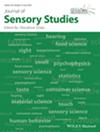Do milk proteins relieve capsaicin-induced burning sensation in the oral cavity?
Abstract
Milk has a soothing effect on the capsaicin-induced burning sensation in the mouth. This double-blinded, placebo-controlled, cross-over study aimed to investigate if milk proteins could relieve the capsaicin-induced burning sensation. During each session, the tongue of each participant was exposed to capsaicin twice for 8 min in total. Subsequently, the participants rinsed the mouth with one of three solutions: 5% casein, 5% whey protein, or water. The participants rated the perceived unpleasantness and burning sensation during capsaicin exposure and after rinsing on numerical rating scales. Thermographic imaging and semi-quantitative sensory testing were performed at baseline, after capsaicin exposure, and after rinsing. No significant differences were observed between sessions in any of the measured parameters (p ≥ .053). Scores for unpleasantness and burning sensation varied over time (p ≤ .006). Heat and mechanical sensitivity changed over time (p < .001). In conclusion, rinsing with milk protein solutions did not have any robust effect in this study design.
Practical Applications
It has been suggested that milk proteins could be responsible for the soothing effect milk has on the capsaicin-induced burning sensation in the mouth. The present results indicate that milk proteins are not solely responsible for this effect. Shedding light on the effects milk and its constituents have on the oral mucosa during a state of burning sensation or pain is of importance. This can help determining if specific constituents of milk could be used to relieve meal-related burning sensations as well as illness-related acute or chronic pain in the oral mucosa.


 求助内容:
求助内容: 应助结果提醒方式:
应助结果提醒方式:


